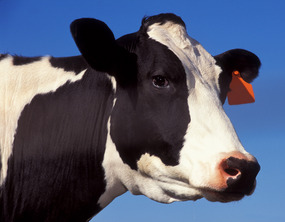| Description | Participants | Agenda | Summary | Talks | Products |
|---|

NIMBioS Investigative Workshop: Modeling Johne's Disease
Additional Information
Background: Johne's Disease is a chronic, granulomatous enteritis of ruminants caused by an environmental bacterium, namely Mycobacterium avium subsp. paratuberculosis (MAP). MAP has been found in the environment in 68.1% of US dairy operation (USDA 2007). The disease causes diarrhea and body weight loss, and can eventually result in the death of infected animals. Mainly due to the reduction of milk production and premature culling of affected cattle, JD causes significant ongoing economic losses in the worldwide dairy industry. In addition, MAP has been associated with Crohn's diseases in humans. Since possible transmission of these diseases through MAP-contaminated food products has been suggested, the control of MAP may also be important for preventing potential threats of MAP to human health.
Epidemiology: MAP infects intestinal tissues of usually young animals and, after 2-5 years of incubation time, infected animals start shedding MAP into feces, milk, semen and amniotic fluid of the infected animals. It was previously believed that calves under two years old rarely shed MAP, but recent research suggests that there is a peak in shedding shortly after the initial MAP infection in calves. The MAP organisms shed into the environment can survive for 200-600 days and serve as a persistent source of new infections in the farm. Transmission of MAP infection typically occurs through ingestion of manure, milk, or colostrum contaminated with the bacteria. Although calves younger than one year old were considered most susceptible to MAP infections, recent reports indicate that MAP infections in adult cattle (> 2 year old) may play an important role in maintenance of endemicity in infected herds. It is unknown whether MAP infection confers preventive immunity on a portion of infected animals. In addition to the horizontal infections through MAP-contaminated environment, in-utero (vertical) transmission of MAP results in an estimated 20-40% of offspring from dams with clinical JD being born with MAP infections. Epidemiological studies of MAP have been hampered by the fact that current diagnostic tests are incapable of detecting the early (latent) stage of MAP infections. For better understanding of JD epidemiology, mathematical modeling approaches have been employed since the early ‘90s. However, to date, there has been no opportunity to gather diverse groups of scientists focusing on the topic. Further, recent studies revealed new epidemiological findings (e.g. new infections of adult animals, host genetic factors affecting susceptibility to MAP infections) that need to be included in mathematical modeling of MAP epidemiology. This workshop will provide a timely opportunity for intensive discussions among scientists about future directions of JD epidemiological studies. We will discuss not only population dynamics in dairy herds, but also economic impact of JD at various levels (farm, state, and national), comparison of various diagnostic tests, and cost-effectiveness of different JD control strategies.
Immunology: MAP infections typically occur through ingestion of manure, milk, or colostrum contaminated with the bacteria. Ingested MAP invades the intestinal mucosal surfaces of the animal and, after passing through epithelial lining of the gut, MAP is phagocytosed by macrophages but evades bactericidal mechanisms of the phagocytes. Infected macrophages then promote formation of granuloma, a pathological hallmark of JD. At the early stage of JD (several months after MAP infection), activated γδ T cells, CD4+ T cells and cytolytic CD8+ T cells attack MAP-infected macrophages and clear the intracellular MAP. However, these cell-mediated immune (Th1) responses will disappear at the subclinical stage of JD and be replaced primarily by antibody-mediated immune (Th2) responses. Antibodies against MAP are not protective and the bacteria can persist in the infected animal. After a long incubation time (2-5years on average), infected animals will start shedding MAP organisms and initiate another cycle of infections. For decades, mathematical modeling has been used for simulation and better understanding of immunological responses and used in new research fields, such as systems immunology and theoretical immunology. However, such approach has not been used for studying JD immunology. This workshop aims to establish an initiative in mathematical modeling of immune responses to MAP in infected dairy cattle by gathering experts in variety of mathematical models, immunology, and veterinary medicine. The workshop will include presentations and discussions on immunological mechanisms of the granuloma formation, dichotomous Th1/Th2 shift, and evasion of MAP from the infected host tissues.
NIMBioS
1122 Volunteer Blvd., Suite 106
University of Tennessee
Knoxville,
TN 37996-3410
PH: (865) 974-9334
FAX: (865) 974-9461
Contact NIMBioS


